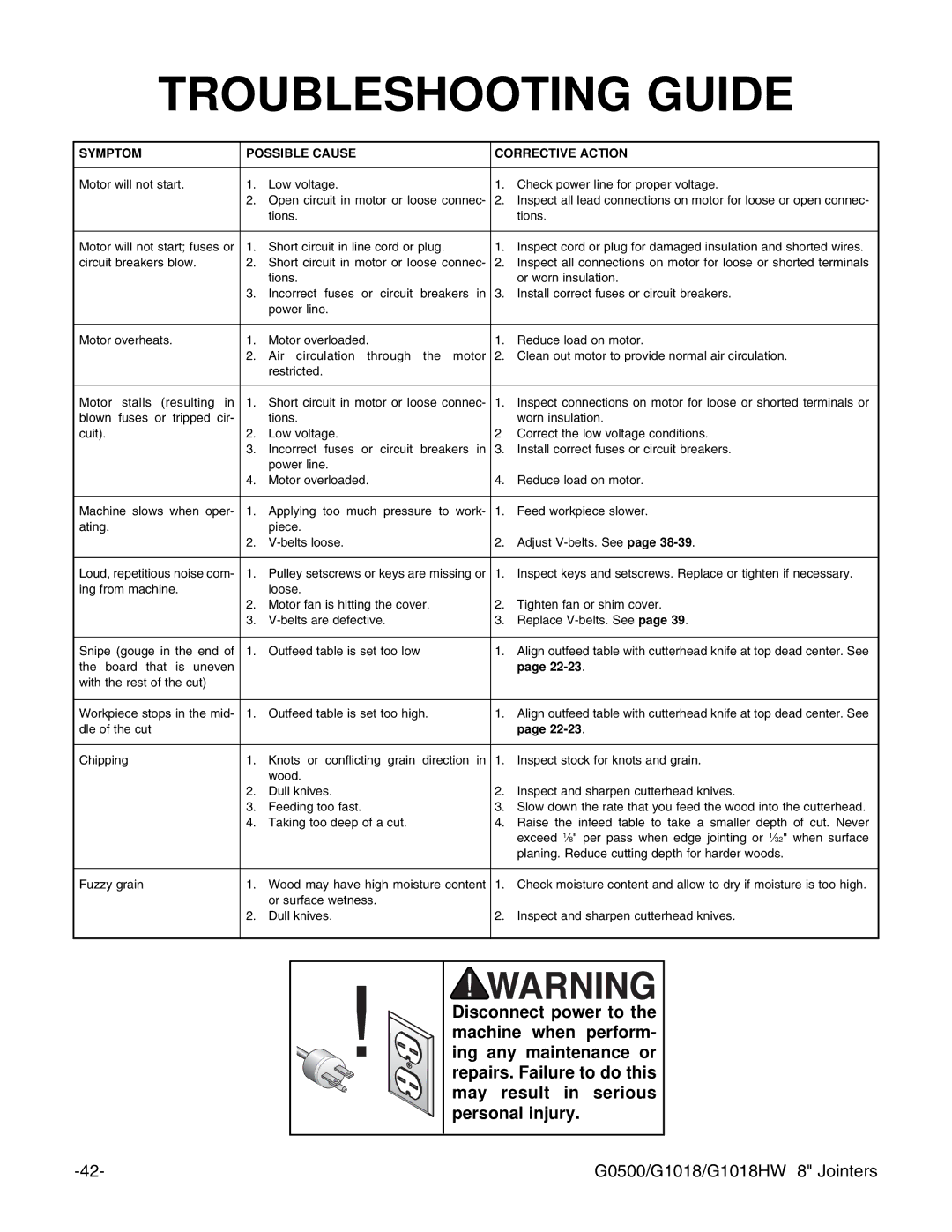G1018, G1018HW specifications
The Grizzly G1018HW and G1018 are compact, versatile woodworking machines designed for hobbyists and professionals alike. Known for their robust construction and user-friendly design, these models offer a multitude of features that cater to various woodworking needs.At the heart of both models is a powerful motor that delivers consistent performance. The G1018HW, being the heavier variant, is built with enhanced durability in mind, making it ideal for users who demand a bit more from their machinery. It boasts an increased weight capacity, ensuring stability during operation, which is particularly beneficial for larger workpieces.
Both models come with an effective dust collection system, crucial for maintaining a clean and safe workspace. The integrated dust port connects easily to standard dust collection hoses, minimizing dust and debris during operation. This feature not only improves visibility but also contributes to overall health safety by reducing airborne particles.
The G1018 and G1018HW are equipped with precision-machined components, ensuring accuracy and reliability in cuts. The adjustable table height and tilt features provide versatility, allowing users to perform a range of operations, from jointing to planing. The intuitive controls and clear scale markings make it easy to set desired measurements without hassle.
Additionally, the machines are designed with portability in mind. Despite their solid build, they come with mobility features such as built-in wheels and handles, making it convenient to move them around the workshop or transport them to different job sites. The compact design fits well into smaller spaces without compromising on function.
Another notable characteristic is the availability of aftermarket accessories, which can enhance functionality further. Users can customize their G1018 models with additional attachments that increase their versatility, allowing them to tackle more complex tasks.
In summary, the Grizzly G1018HW and G1018 are exceptional additions to any woodworking setup. Their powerful motors, effective dust control systems, precision-engineered components, and user-friendly design set them apart in the realm of woodworking machines. Whether for a hobbyist or a seasoned professional, these models provide the practicality and reliability needed to produce high-quality results.

